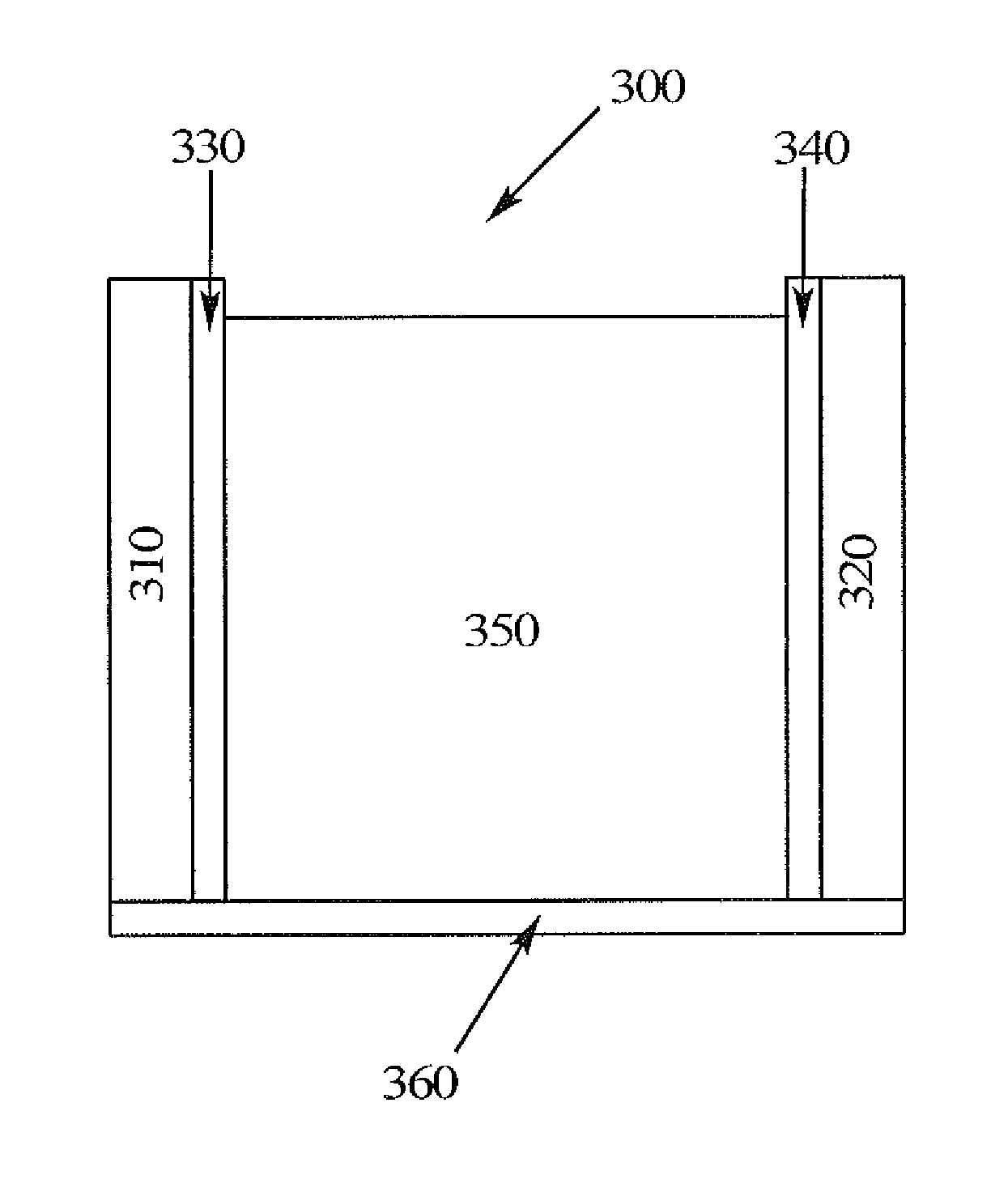Photoalignment materials having improved adhesion
- Summary
- Abstract
- Description
- Claims
- Application Information
AI Technical Summary
Benefits of technology
Problems solved by technology
Method used
Image
Examples
example 1
Poly[((E)-2-methoxy-4-(3-methoxy-3-oxoprop-1-enyl)phenyl 4-(6-(methacryloyloxy)hexyloxy)benzoate)-co-(2-[(3,5-dimethylpyrazolyl)carboxyamino]ethyl methacrylate)]
[0107]
[0108]The following materials were added to a 50 mL Schenk tube: (E)-2-methoxy-4-(3-methoxy-3-oxoprop-1-enyl)phenyl 4-(6-(methacryloyloxy)hexyloxy)benzoate (2.83 g, 0.0057 mole), 2-[(3,5-dimethylpyrazolyl)carboxyamino]ethyl methacrylate having CAS# 78279-10-4 available from Showa Denko (0.478 g, 0.0019 mole), 2,2′-azobis(2-methylpropionitrile) (0.0062 g, 0.000038 mole) and cyclopentanone (14.17 g). The tube was cooled in dry ice-acetone bath and degassed by vacuum pump followed by filling with N2. This process was repeated five times. The tube was placed in an oil bath maintained at 60° C. and stirred for 16 hrs. Polymer molecular weight was analyzed by Gel Permeation Chromatography (“GPC”) using a column calibrated with a polystyrene standard. The results were as follows: Mn=43,864; Mw=123,738; Mw / Mn=2.82.
example 2
Poly[((E)-2-methoxy-4-(3-methoxy-3-oxoprop-1-enyl)phenyl 4-(6-(methacryloyloxy)hexyloxy)benzoate)-co-(2-[(3,5-dimethylpyrazolyl)carboxyamino]ethyl methacrylate)-co-(γ-methacryloxypropyltrimethoxysilane)]
[0109]
[0110]The procedure of Example 1 was followed except that the following materials in the amounts specified were used: (E)-2-methoxy-4-(3-methoxy-3-oxoprop-1-enyl)phenyl 4-(6-(methacryloyloxy)hexyloxy)benzoate (1 g, 0.002 mole), 2-[(3,5-dimethylpyrazolyl)carboxyamino]ethyl methacrylate (0.1807 g, 0.00074 mole), γ-methacryloxypropyltrimethoxysilane (0.0357 g, 0.0001 mole), 2,2′-azobis(2-methylpropionitrile) (0.0047 g, 0.00003 mole) and the solvent cyclopentanone (5 g). Polymer molecular weight was analyzed by GPC using a column calibrated with a polystyrene standard. The results were as follows: Mn=54,144; Mw=116,402; and Mw / Mn=2.15.
example 3
Poly[((E)-2-methoxy-4-(3-methoxy-3-oxoprop-1-enyl)phenyl 4-(6-(methacryloyloxy)hexyloxy)benzoate)-co-(2-isocyanatoethyl methacrylate)]
[0111]
[0112]The procedure of Example 1 was followed except that the following materials in the amounts specified were used: (E)-2-methoxy-4-(3-methoxy-3-oxoprop-1-enyl)phenyl 4-(6-(methacryloyloxy)hexyloxy)benzoate (1 g, 0.002 mole), 2-isocyanatoethyl methacrylate (0.104 g, 0.00067 mole), 2,2′-azobis(2-methylpropionitrile) (0.0044 g, 0.00003 mole) and the solvent cyclopentanone (5 g). Polymer molecular weight was analyzed by GPC using a column calibrated with a polystyrene standard. The results were as follows Mn=57,351; Mw=149,825; Mw / Mn=2.61.
PUM
| Property | Measurement | Unit |
|---|---|---|
| Fraction | aaaaa | aaaaa |
| Fraction | aaaaa | aaaaa |
| Structure | aaaaa | aaaaa |
Abstract
Description
Claims
Application Information
 Login to View More
Login to View More - R&D
- Intellectual Property
- Life Sciences
- Materials
- Tech Scout
- Unparalleled Data Quality
- Higher Quality Content
- 60% Fewer Hallucinations
Browse by: Latest US Patents, China's latest patents, Technical Efficacy Thesaurus, Application Domain, Technology Topic, Popular Technical Reports.
© 2025 PatSnap. All rights reserved.Legal|Privacy policy|Modern Slavery Act Transparency Statement|Sitemap|About US| Contact US: help@patsnap.com



